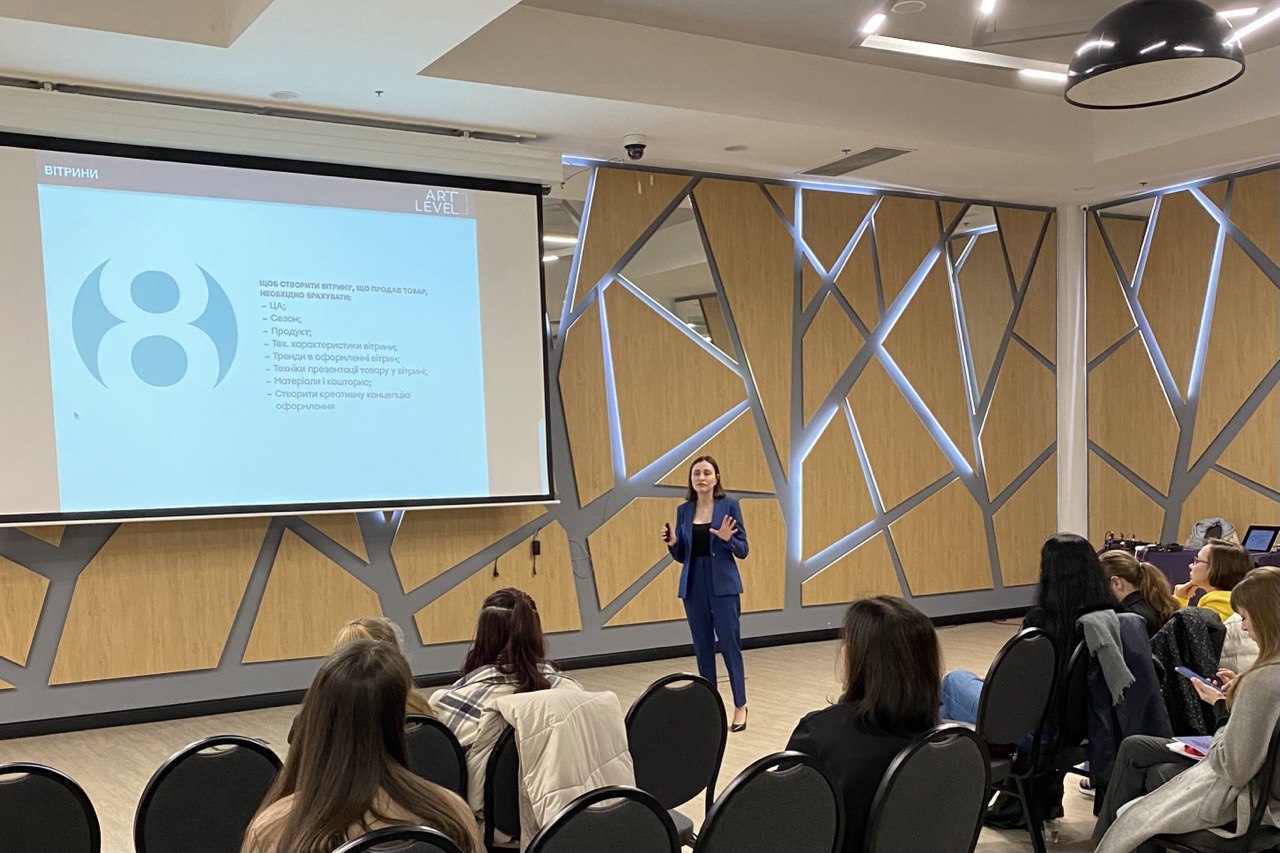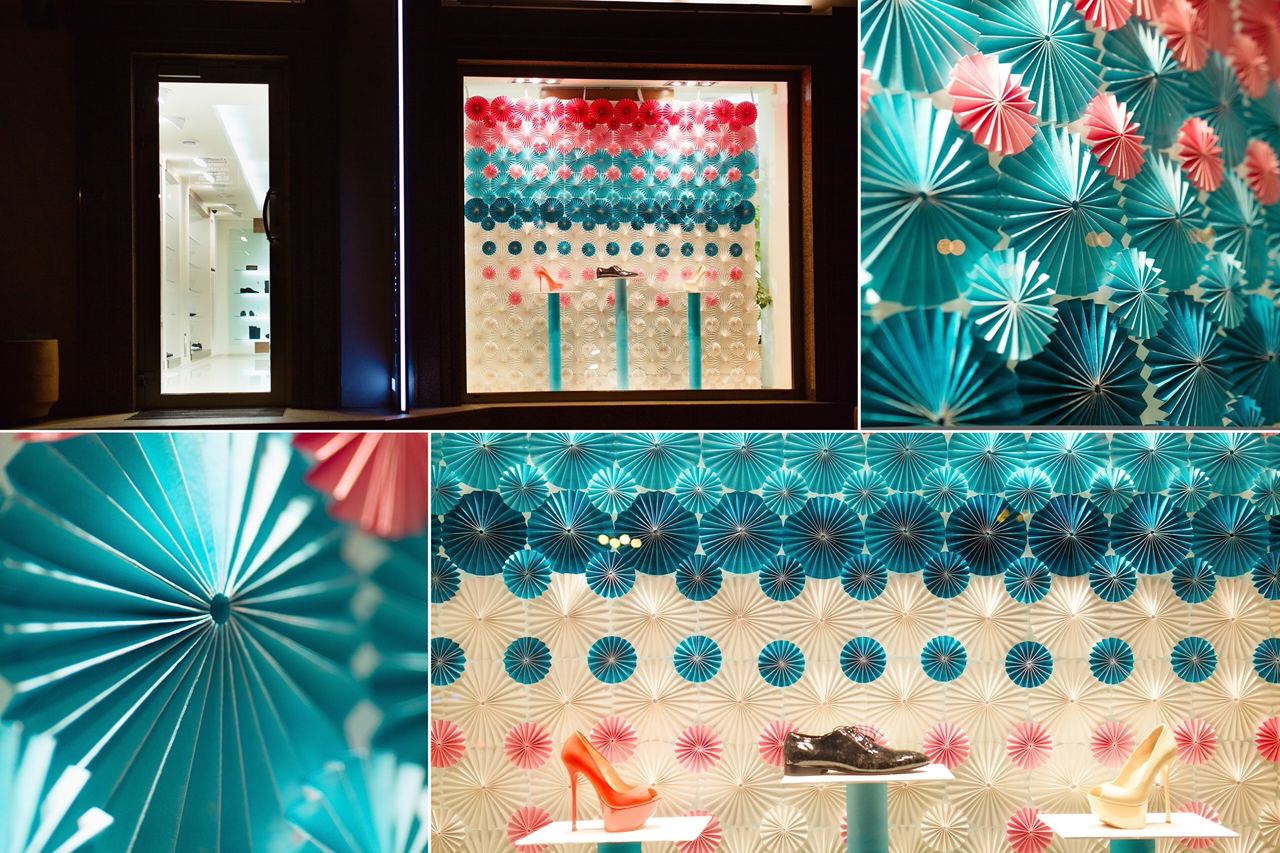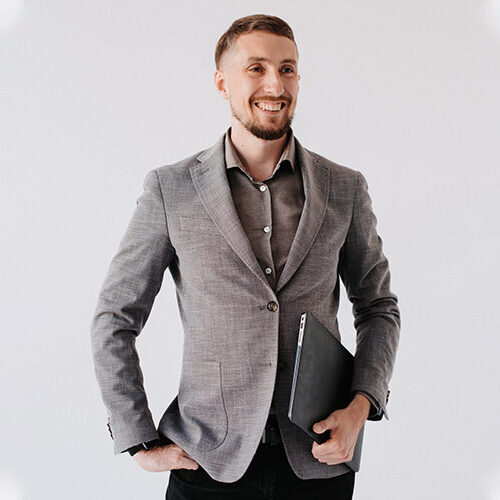Hello!
I’m Olena Zadniprovska, Head of Content Marketing and partner at Solve Marketing.
Today I’m going to talk to Olga Pavlova, a visual merchandising expert and founder of ARTLEVEL.
In this interview, you will learn about the following:
- how to increase offline store sales by 60%;
- how store design affects its profit;
- Ukrainian store in the top 5 best in the world according to World Best Windows Display;
- and much more.

— Olga, please tell us about yourself. What do you do for a living?

— Hello, everyone! My name is Olga Pavlova. I have been a visual merchandising expert for over 10 years.
Back in 2013, I opened my own design studio for organizing events. However, later I became interested in window dressing. Unfortunately, at that time there were no institutions in Ukraine that taught this specialty. So I went to New York to study, where window dressing is a real culture. The city has a thematic museum, training programs and excursions. This is especially noticeable at Christmas. For example, in 2022, Elton John himself opened the window of the main department store in New York.
I would really like to see this trend develop in Ukraine in the same way. Because this is a whole science, not just putting goods on the shelves according to a planogram. With the help of visual merchandising, you can influence the customer’s choice and the amount of money they spend in the store. To do this, we combine marketing, psychology, ergonomics, and design.
I have my own school where I teach students window dressing from scratch. After graduation, they come out as ready-made specialists who can create planograms and concepts for stores, taking into account the business theme, target audience, etc. The course lasts a month. At the end of the course, students defend their graduation projects, which are later included in their portfolios. This is a great opportunity for students who are looking for a job or are already working in this field and want to develop.
I also run a social project where I conduct free visual merchandising workshops for shopping center tenants and talk about how to improve the current situation in Ukrainian retail.
I’m also currently creating my own club, which aims to bring together retail, window display, commercial lighting, architects, designers and other professionals involved in visual merchandising and trade.


— Could you please tell us what an offline store should look like in terms of visual merchandising?

— A store should be conceptual and designed for its target audience.
First of all, it should be a service retailer. Customers should feel comfortable and pleasant in the store. It is also worth considering that modern people are very busy, so we need to save them time when shopping. Then the audience will be satisfied, become more loyal to the brand and remain its customers for a long time.
Secondly, the store design should be in line with the brand’s positioning and philosophy.

— What challenges does a new offline store owner usually face? How do you help them solve them?

— The first challenge is to create an idea and brand philosophy, identify the target audience and its needs. My goal is to make Ukrainian retail better, so I am working on it.
The second is opening a store. If the owner has already found a space, we adapt to it. But if he hasn’t, it is important to take into account the shopping neighborhood, as this will affect the traffic of the target audience. For example, if neighboring brands have a different target audience, the number of your potential customers will be low, because they will not pass by you.
That is why shopping centers have separate stores by product or price category. For example, separate floors are created with lingerie or sportswear stores. Speaking of segmentation by price, a good example is the placement of such well-known brands as Dior, Channel, etc. next to each other.
In addition, it is important to develop a design concept that is consistent with the brand’s values. They should be reflected in the interior colors, in the aroma and lighting, in the appearance and communication of the staff. We also have to divide the space into zones according to the customer’s path in the store. After that, we move on to the presentation and packaging of the goods. All this should satisfy the customer and encourage them to buy more.
A very important step in store design is to work on non-verbal communication — navigation, as it is not always possible to address the seller. Therefore, the buyer must navigate the sales floor on their own with the help of directions and bright price tags that should be on all shelves.
The shop window itself is also important, as it is the first thing your potential customers see.
Without taking these aspects into account, a business loses many customers and their loyalty, and, accordingly, profit.

— What are the top 3 problems or needs that you are most often approached with?— What are the top 3 problems or needs that you are most often approached with?

— I am often approached for an audit. I visit the store and check the correctness of the product presentation according to a certain checklist. Then the most frequently encountered problem is a lack of understanding of how to arrange it. This problem occurs not only in stores that have recently started operating, but also where merchandisers are already working.
The second common problem is too much product on the sales floor. Of course, there is no display, and the products look like “sardines in a can”. This does not increase sales, but, on the contrary, scares away potential customers.
I also face the problem of unwillingness to decorate a shop window. I usually hear from store owners the mistaken belief that it is their employees who should decorate. But it’s not the same thing. Window decoration is about brand communication with the audience, where you can tell the right information without words.

— What should business owners prepare for when they come to you?

— They should be prepared for significant changes and material investments. Unfortunately, you can’t come to a store and just rearrange the goods and thereby increase sales. To improve the situation, you need to approach it comprehensively — change the zoning, presentation, layout, and other aspects. Sometimes it turns out that not all owners are ready for this.
It is especially difficult with those who are fully involved in all work processes. It is much easier to work when my expertise is trusted and the desired result is expected.

— Could you tell us how the war has affected your business and what has changed since then?

— When many shops and pharmacies closed at the beginning of the full-scale war, I realized how important retail plays in everyone’s life. This became an impetus for me to plunge into my work intensively.
I also saw that Ukrainian business is ready for development as never before. All Ukrainians are now helping each other to ensure that Ukraine’s economy recovers as quickly as possible. This is what inspired me to start a social project.
I am sure that after the victory, Ukraine will grow even more economically. Because even during the war, many stores and chains are opened.

— What trends in retail do you currently observe?

— In general, I like to travel the world and learn about the latest changes. In particular, I gain new knowledge by going to various retail exhibitions. So once every three years I visit the world’s largest exhibition where trends are formed — EuroShop.
As for current trends, I can tell you about some of them.
The first is service. It means that retailers should take care of their customers in a way that makes them feel comfortable and spend a minimum of time. Ukraine is a good example of quality service. Here, for example, there are many stores with contactless checkouts and the ability to order goods online.
Another trend is sustainable — conscious production, which aims to preserve the Earth’s ecology, consume less and produce more. For example, the production or processing of goods and mannequins from natural or wear-resistant materials.
The digital direction is also developing rapidly. The goal in Ukraine is to open stores without salespeople. In Poland, for example, there is already a shoe store staffed only by robots.
And as for design trends, it’s environmental friendliness.

— What are your top three tips for offline store owners?

— I advise, firstly, not to be afraid to turn to professionals, because it is impossible to be an expert in all fields.
Secondly, don’t be afraid to do something new. There is no fixed formula that will lead you to success — everyone has their own way. This applies to attracting a new audience, introducing services, testing hypotheses, etc. Especially when it comes to visual merchandising, which consists solely of experiments.
The phrase is appropriate here: “When it works, scale it up, and if it doesn’t, redo it”. It should become a part of every retailer’s understanding that even with small funds, you can experiment and see what gives the best results.

— Yes, and follow the trends!
Because to make a “candy” you need to understand what is happening in the world. Because what was interesting two years ago has lost its relevance today. It is important to understand what to offer to your client.

— Yes, and follow the trends!
Because to make a “candy” you need to understand what is happening in the world. Because what was interesting two years ago has lost its relevance today. It is important to understand what to offer to your client.

— What are your plans for the development of your service?

— First, I want to scale up. My plans are to grow students to the point where I can delegate my responsibilities to the best people and take them into my team.
And, of course, I want to cooperate with different countries.
For example, at EuroShop, we agreed to work with two companies. One of them is a French company that produces ultralight structures made of recycled plastic and aluminum. They can be used to decorate and style shop windows.
The second is a Portuguese company that manufactures commercial equipment, decorative and interior elements for stores from natural materials: salt, coconut fiber, cork. They also use recycled sneaker soles in their production, which is very cool!
I would like to bring such technologies to Ukraine!

— Can you give us an example of one of the cases in your work that you consider the most successful?

— I usually say that merchandising alone cannot achieve significant results. But I have one case back when I lived in Dnipro. I was invited to one store to organize the space and display the goods differently.
I was amazed when the owner told me that after that, their sales increased by 60%. How did we do it? We divided the goods into appropriate groups and laid them out using a certain technique. By the way, this store is still operating successfully despite the war.
We also made shop windows for the store, which later became one of the top 5 best in the world according to World Best Windows Display. The photos went around the world, including in a textbook in China. An article was also written about this window, and it became a place for photo shoots.


— How can offline store owners calculate the effectiveness of visual merchandising and what indicators should they pay attention to?

— You can see the effectiveness before and after the experiments. Of course, the analysis should also take into account the impact of seasonality or certain events.
To do this, it is advisable to hire a separate person to track the number of sales and popular products. There are also tracking systems that record the number of visitors to a store over a certain period of time. There are also more expensive ones that track the customer’s path and determine which products they spend the most time near.
To achieve greater success, it is important to keep experimenting with the layout, shop equipment, zoning, etc.

— Thank you for your informative answers and interesting interview!




